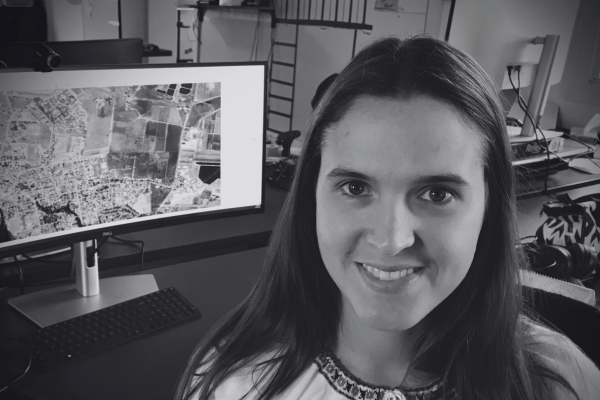The population and housing forecast for the North Coast - New England region
SA4s in region:
- Richmond-Tweed
- Coffs Harbour-Grafton
- Mid North Coast
- New England and North West
Version: 5.1.1
Read forecast analysis and insights for the North Coast - New England region from Australia's largest independent population forecasting team.
Detailed forecasts are available for this region
Our premium services give you detailed forecast information for this region to help you invest in the right place, at the right time.
- Forecasts by age and sex
- Single-year forecast periods
- Custom local area geography
- Forecasts of housing and development
Menu
Read the insights and analysis behind our population and dwellings forecasts for the North Coast - New England region.
About the North Coast - New England region
The North Coast - New England region consists of four SA4s, namely, Richmond-Tweed, Coffs Harbour-Grafton, Mid North Coast, and New England and North West. This region is predicted to hold a 7% share of New South Wales' population growth between 2021 and 2046.
The Richmond-Tweed SA4 stretches from the Yabbra National Park in the west, through the Richmond Valley to the northernmost stretch of coastline within the state of NSW. The coastline within this SA4 goes from "The Gap" and the town of Evans Heads in the south, northwards to Ballina, then Byron Bay, Pottsville, and finally, Tweed River. It features the rapidly-growing SA2 of Tweed Heads, and three of the four basins constituting the Northern Rivers region. Notably, this region was significantly impacted in the record-breaking 2022 floods.
Mid North Coast is an expansive SA4 that covers the area along the NSW coast from Bulahdelah in the South through to Valla Beach in the North. The main centres are Forster–Tuncurry, Taree, Port Macquarie, Kempsey, and Nambucca Heads. It includes the LGAs of MidCoast, Port Macquarie - Hastings, Kempsey, and Nambucca.
New England and North West SA4 is one of Australia's most productive agricultural regions. It borders the state of Queensland to the north, and the North Coast of New South Wales to the east. The SA4 includes the regional cities of Tamworth and Armidale, and LGAs such as Tamworth Regional, Armidale Regional, Gunnedah, and Inverell, along with several others.
Key findings
Richmond-Tweed
Over the forecast period, the Richmond-Tweed SA4 is set to grow from almost 257,000 residents in 2021 to around 316,000 in 2046, adding approximately 59,000 people over the 25 years. Growth in the SA4 is dominated by the Tweed Heads SA2 (which roughly doubles its population in the forecast period), and the Lennox Head-Skennars Head SA2 (growing to 1.9 times its 2021 census population by 2046).
The Tweed Heads SA2 is expected to grow to almost 40,000 residents by 2046. This significant growth is sourced from the vast urban release areas around the Bilambil and Bilambil Heights villages, as well as the Cobaki Lakes precincts. While the Cobaki Lakes land releases remain to be tested by the market, there is evidence to indicate a good uptake by the releases around Bilambil Heights, with development already underway in parts. Further, the proximity of Tweed Heads to the Gold Coast community (including the Gold Coast airport among other amenities) supports densification of existing residences within the central parts of Tweed Heads, and contributes to the growing population in the area.
While Tweed Heads ramps up development in the medium- to long-term, the other major growth SA2 - Lennox Head-Skennars Head - realises its development largely in the early- to mid-term, with a lower but sustained tail into the long-term. This is attributable to the large developments which are already underway and/or are approved for commencement shortly in the neighbouring towns of Skennars Head and Lennox Head. While several strategic urban growth areas have been identified, their area is less than would be required to maintain the construction rates experienced currently and into the next few years. The Lennox Head-Skennars Head SA2 is predicted to reach a population of 17,000 by 2046.
A detailed analysis of development in Tweed Heads
Liza explains how our assessment of significant development sites informs our population forecast for the Tweed Heads region.
On the other hand, some SA2s are constrained and experience little to no population growth over the forecast period, such as Tweed Heads South SA2 and Banora Point SA2 in the north, and Ballina SA2 in the south. For some others, forecast population growth is limited not by land supply but rather by demand, with an unproven appetite for development in the area, such as in the Casino SA2 and the Murwillumbah Surrounds SA2. In another case still, forecast is limited by the uncertain impact of a natural disaster event, namely, the February/March 2022 floods which devastated parts of the Northern Rivers region, most notably the Lismore community. While support is being provided to the affected residents, and many have indicated their intention to remain in the general region, several residential areas need to be replanned and rezoned, and the future appetite for settling in the Lismore SA2 beyond relocations of existing residents is unclear at this stage.
How flooding impacts the population forecast for Lismore
Liza shows how government buy-back schemes impact dwelling stock, and therefore the how the future population of Lismore is distributed throughout the city.
Mid North Coast
Mid North Coast SA4 grows steadily through the forecast period from 228,270 in 2021 to 279,824 persons by 2046, a growth of just over 22%. Most of the growth in this SA4 is concentrated in centres along the coast rather than inland towns due to demand driven by the appeal of coastal living, which also sees it being a popular retirement destination with many over 55s communities being established.
Almost all SA2s that see significant growth are located in the MidCoast and Port Macquarie - Hastings LGAs. The SA2 with the largest growth within the forecast is the Port Macquarie - West SA2, which sees its population grow from 21,168 in 2021 to 30,794 in 2046. The growth in this SA2 is predominantly greenfield growth with the Sovereign Hills Estate continuing to build out, and the surrounding release areas in Thrumster and Fernbank Creek being utilised in the latter half of the forecast.
Another SA2 seeing significant growth is Old Bar - Manning Point - Red Head, located on the coast near Taree. This growth is spurred by estates popping up along the coast, which sees the population grow by almost 7,000 people from 12,427 in 2021 to 19,371 by 2046.
Notably in the Tuncurry and Forster-Tuncurry Surrounds SA2 we see the development of the Landcom site in North Tuncurry, this will be a new precinct with around 2,150 dwellings. This sees the population in Tuncurry grow by around 48%, and Foster-Tuncurry Surrounds by around 27%.
Both Kempsey and Nambucca LGAs see lower but steady growth through the forecast, notably in the South West Rocks SA2 in the Kempsey LGA growing from 5,591 people in 2021 to 7,793 by 2046.
Coffs Harbour - Grafton
The Coffs Harbour - Grafton SA4 will grow modestly for the forecast period from 146,000 to 178, 500 or approximately 32, 00 people at 0.8% per annum. The SA4 consists of three LGAs, namely Coffs Harbour, Clarence Valley and Bellingen.
Growth will be focused in a small number of centres, with the rest of the region largely devoted to agriculture and parklands. From the north to the south along the coast, growth is exptected in Yamba, Safety Beach - Woolgoolga, Moonee Beach, Coffs Harbour and Boambee. The only inland township that is expected to grow is Grafton and the Junction Hill area to it's immediate north.
Junction Hill is the site of the largest Resilient Lands Program activity, part of the NSW government's response to the significant flooding in the Northern Rivers in 2022. Over time, it is expected to deliver around 1,000 houses, accommodating approximately 2,300 people, or about 10% of Grafton's current population.
Most growth is expected to be in detached dwelling style housing, with little higher density expected to be built although there are a number of manufactured housing estates being planned.
The Coffs Harbour - South SA2 is forecast to grow the fastest at 1.9% pa from 11,200 to almost 18, 000 people, and Urunga will be the slowest growing SA2, adding around 400 people, mostly expected to be located in the Black Wattle Estate.
New England and North West
Over the forecast period, the New England and North West SA4 is predicted to grow by approximately 23,000 residents to reach a population of almost 210,000. Most notably, growth is expected in and around the regional city of Tamworth, involving the SA2s of Tamworth - East (0.78% population growth p.a.), Tamworth - North (0.8% population growth p.a.), Tamworth - West (0.71% population growth p.a.), and Tamworth Surrounds (0.9% population growth p.a.). Collectively, the four SA2s are expected to be home to over 60% of the residents of New England and North West NSW.
Beyond the Tamworth population epicentre, steady growth is forecast to continue in the regional city of Armidale (+2,700 residents by 2046), as well as the towns of Tenterfield and Gunnedah. Armidale is set to maintain its strong profile in agricultural and educational sectors in the region, and Gunnedah and Tenterfield in agriculture. Uncertainty prevails over the extent to which the renewable energy zone, currently being developed in the region's east and of which Armidale is the centre, will drive job growth and subsequently, a population rise. We have remained on the cautious end of estimates for the time being, particularly as prospects strengthen for the Special Activation Precincts in Moree and Narrabri, with Inland Rail on track in its timeline of the NSW delivery stage.
Minimal to no growth is predicted in the "surrounds" - rural areas surrounding the region's townships and regional cities. Sluggish growth has persisted in most villages across the SA4 historically, with some notable drops at the last census, and there is little reason to expect a change in this trend. The town of Moree and its surrounds form a notable exception: while predicted growth is still a relatively small 0.2%, it is a major change from the population decline trend the town has been on for the last three censuses. We forecast a turn to population growth due to the development of the Special Activation Precinct mentioned above. We will be monitoring the development of that area closely.
What share of Australia's growth will occur in New South Wales?
Read our forecast results and analysis for New South Wales on the resources page. Watch the webinar recap or see a summary slide pack to learn what's driving growth in Australia, and each region of the state.

This slide is an except from our webinar presentation, The population forecast for New South Wales and the ACT.
Forecast results
The following forecast information presents combined numbers for all SA4s in this region.
Learn more about the different options to access these forecasts for Local Government Areas (LGAs), suburbs, custom catchments or the entire state or nation here.
| 2021 | 2026 | 2031 | 2036 | 2041 | 2046 | |
| Forecast Population | 1,005,546 | 1,049,993 | 1,088,392 | 1,124,806 | 1,160,422 | 1,194,223 |
| Change (five year) | - | 44,447 | 38,399 | 36,414 | 35,616 | 33,802 |
| Average Annual Change (%) | - | 0.87% | 0.72% | 0.66% | 0.63% | 0.58% |
| Forecast Dwellings | 466,376 | 485,302 | 504,724 | 524,627 | 544,690 | 564,650 |
| Change (five year) | - | 18,925 | 19,422 | 19,903 | 20,063 | 19,960 |
| Average Annual Change (%) | - | 0.80% | 0.79% | 0.78% | 0.75% | 0.72% |
1 national forecasting program.
6 ways to explore.
![]()
forecast.id
Plan for the changing needs of your community with a trusted forecast of population and housing in your Local Government Area, published in an accessible online tool.
![]()
forecast.id premium
Bring the full power of our National Forecasting Program into your organisation. We'll work with you to tailor a data partnership supported by briefings from our experts.
![]()
forecast.id partners
Our pay-per-download program gives our consulting partners instant access to reliable and respected forecast information on a project-by-project basis.
![]()
forecast.id hotspot report
Find a location near the people you serve with a tailored report that identifies up to ten locations with the highest number of people in your target demographic.
![]()
forecast.id location report
Whether you're investing in a new location or checking your current strategy is on track, forecast.id location reports quantify future demand around a known location.






.png?width=600&height=400&name=Meet%20the%20team%20%20Oliver%20Bowering%20(1).png)
